- Кусачки- С их помощью проволока обрезается до нужной длины и соответствует требованиям дизайна.
Основы проектирования электрических жгутов, этапы, распространенные ошибки, советы
By Tina / 2019年7月3日
Основы проектирования электрических жгутов, этапы, распространенные ошибки, советы
Проектирование жгута проводов - это, возможно, один из важных этапов, позволяющих любому электрическому устройству работать, особенно если речь идет об автомобиле. Фактически, успех приложения и его связь с проводами и общим потоком тока зависят от того, насколько хорошо спроектирован жгут проводов.
Что такое жгут проводов?
Комплект жгута проводов - это сборка проводов или электрических кабелей для передачи сигналов или электроэнергии. В процессе сборки провода связываются прочным материалом, например нейлоновой стяжкой. Именно жгут проводов обеспечивает надежность эффективной передачи энергии и информации в приложении.
Мы еще много чего можем рассказать вам о жгутах проводов, но в этой статье мы дадим вам базовый обзор, пошаговые инструкции по проектированию и конструированию.
Где используются сборки жгутов проводов
Сборки жгутов проводов используются во множестве различных сред. В автомобильной промышленности, аэрокосмической отрасли, военной технике, потребительских товарах и даже в домашних проектах. Многие из этих применений содержат несколько жгутов проводов, и многие из них являются неотъемлемой частью эффективной работы машины, транспортного средства или изделия.
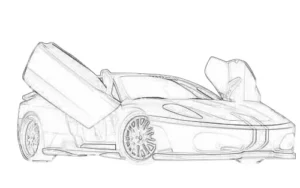
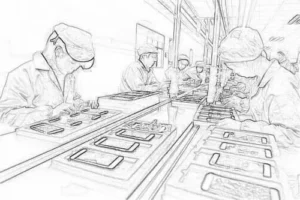
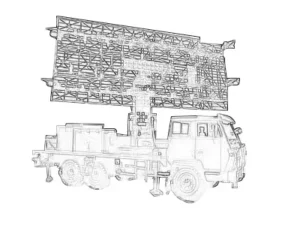
Когда следует устанавливать жгуты проводов
Сборки жгутов проводов используются во множестве проектов, которые содержат и полагаются на различные провода и кабели, выполняющие различные задачи. Сложность большинства кабельных инсталляций заключается в том, что сами кабели и провода трудно организовать и содержать в порядке и аккуратности. Жгут проводов в сборе поможет лучше организовать работу и облегчить монтаж проекта и установки, а также обеспечить более плавную работу всего устройства.
Однако при проектировании жгутов проводов необходимо пройти через определенные базовые этапы и процессы. Только благодаря этому можно обеспечить эффективное функционирование приложения. Поэтому позвольте мне познакомить вас с некоторыми основами проектирования электрических жгутов проводов.
Дизайн жгута электрических проводов
Как мы все знаем, дизайн в основном создается для решения конкретной задачи или результата, чтобы обеспечить правильный выход. Аналогично, жгут электрических проводов разрабатывается для обеспечения правильной структуры проводов, чтобы помочь устройству функционировать так, как от него ожидают.
В жгутах проводов особое внимание уделяется двум важным элементам, таким как геометрический и электрический. Идентификация этих двух элементов чрезвычайно важна для создания и реализации эффективного дизайна жгута проводов.
Геометрическая направленность позволяет определить конкретное пространство, в котором необходимо закрепить жгут проводов. Это поможет определить, должна ли конструкция жгута быть рассчитана на большую или меньшую сеть электропроводки.
Вторая задача - определить потенциальные недостатки электроснабжения, которые могут возникнуть при проектировании. Для этого при проектировании особое внимание уделяется конкретным электрическим рекомендациям, которые должны быть соблюдены при проектировании. Это обеспечит защиту проводов как от внутренних, так и от внешних повреждений, вызванных электрическими проблемами.
Однако, как и во всех других случаях, дизайн жгута проводов будет в основном сосредоточен на надежности, функциональности и эффективности продукта, а не на искусстве. Также удобно, что у вас есть два варианта дизайна жгута проводов.
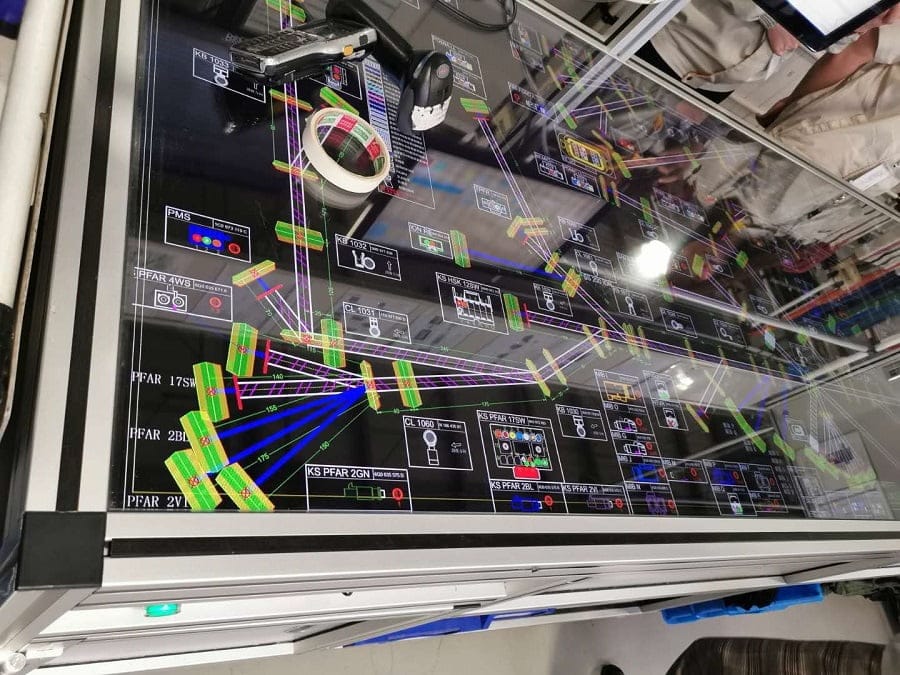
Проводка Desgin Светодиодный дисплей
Варианты конструкции жгута электрических проводов
На рынке существует множество программных приложений для проектирования жгутов электропроводов, которые автоматизировали процесс проектирования. Но при должном понимании и умении жгуты можно разрабатывать и вручную. Существует также множество организаций, которые могут разрабатывать жгуты проводов на заказ в соответствии со сложными условиями и спецификациями.
Итак, если вы хотите узнать, как самостоятельно разработать жгут проводов, позвольте мне посвятить вас в детали, чтобы выполнить ваши требования, почему бы не прийти и поговорите с нами о своих разработках.
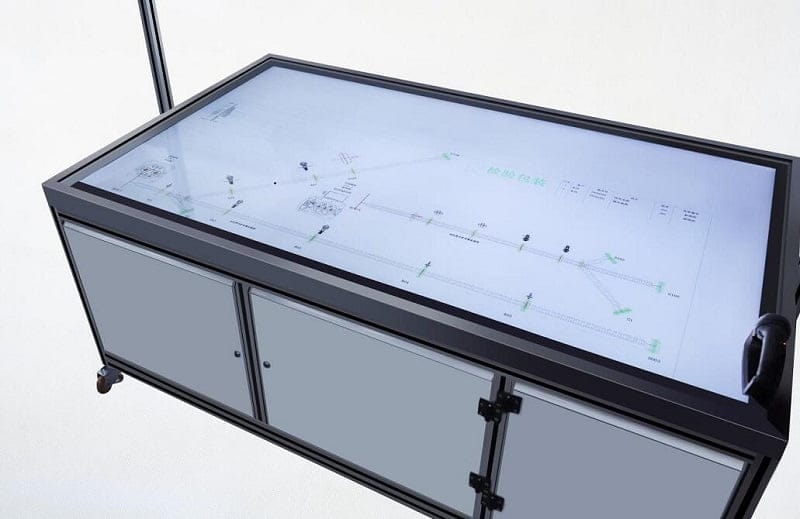
Система проектирования электропроводки
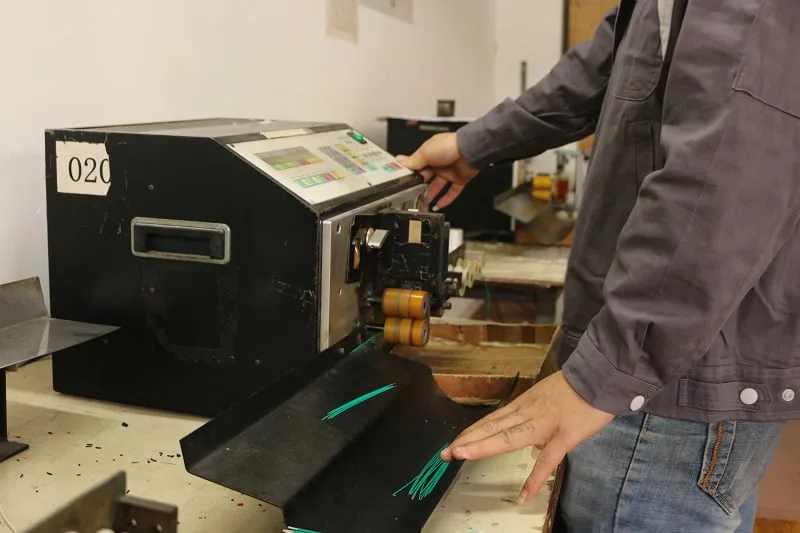
Машины для резки и зачистки
- Стрипперы для проводов- Они используются для снятия изоляции с кабелей, когда это необходимо.
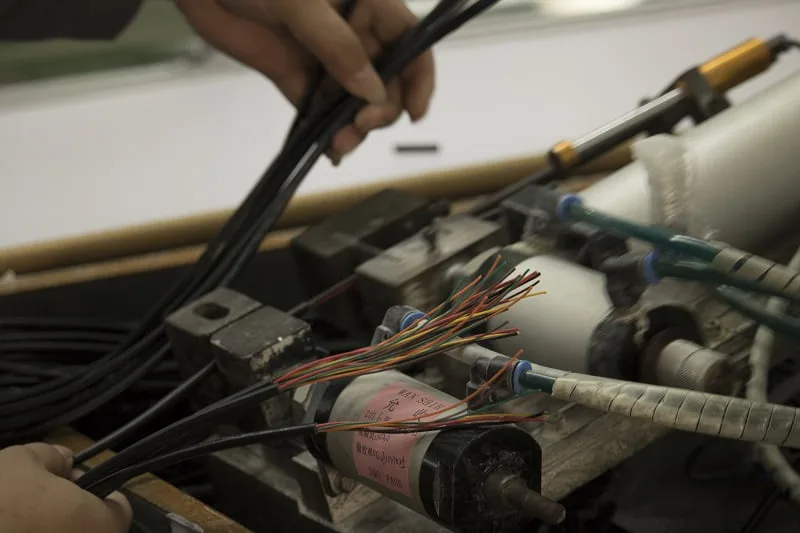
Зачистка кабельной оболочки машины
- Обжимные клещи/трещотки- Они используются для затягивания клемм на зачищенных проводах.
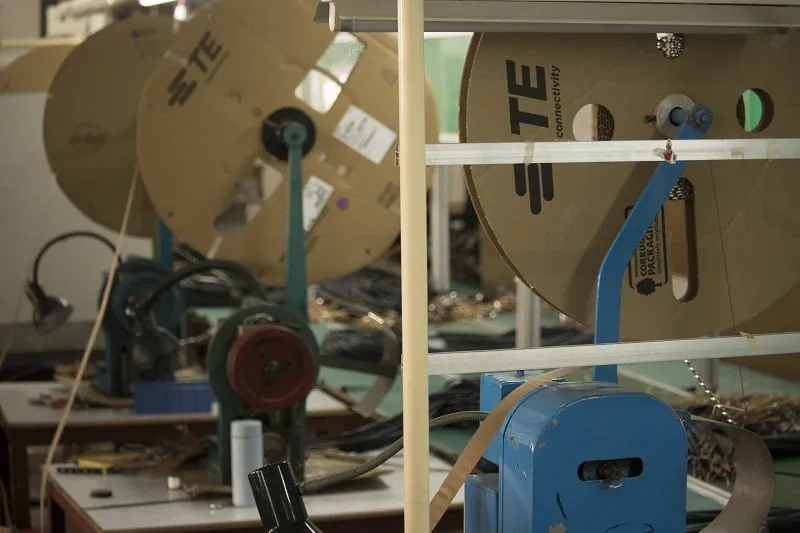
Полуавтоматическая обжимная машина
- Провода и кабели- Они необходимы для создания потока сигнала/энергии к ожидаемому терминалу
- Кабельные или зажимные стяжки- Они помогают аккуратно собрать жгут проводов в пучок.
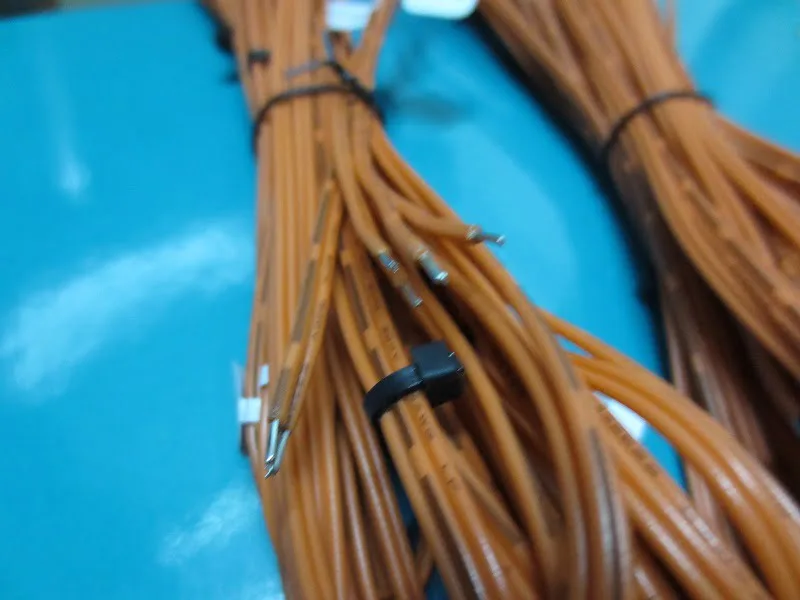
Кабельные стяжки
Когда все готово, остается только выполнить схему жгута проводов. Для этого вам понадобится создать схему проводки, которая поможет вам измерить провода, разрезать и зачистить их, связать кабели и т. д.
В следующем разделе вы узнаете, что такое схема жгута проводов.
Разработка схемы жгута проводов
Схема жгута проводов - это физический план соединения, которое вы пытаетесь создать для автомобиля или любого другого предполагаемого применения. Схема жгута проводов отличается от принципиальной схемы. В ней используются абстрактные символы для представления компонентов соединения.
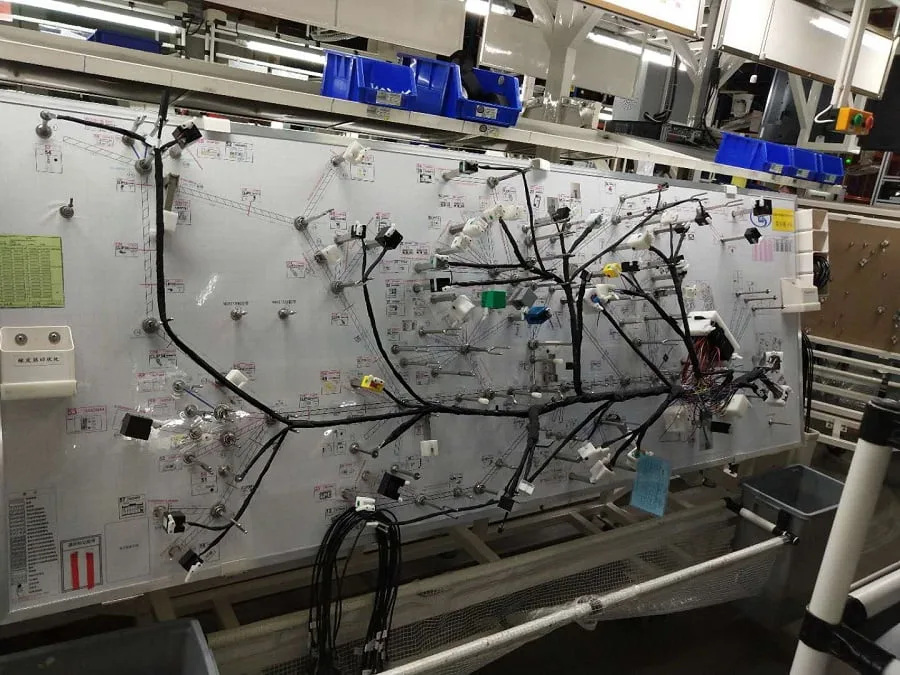
Автомобильные схемы жгутов проводов
Идеальная схема жгута проводов будет содержать условные обозначения компонентов, оптимальное расположение, места соединения и цвета проводов. Это поможет разграничить различные моменты, которые необходимо учесть в процессе прокладки проводов. Внешний вид схемы - это типичное представление того, как в конечном итоге будет выглядеть пучок проводов.
Фактически по внешнему виду схемы можно определить, насколько сложным или чистым будет ваш индивидуальный жгут проводов.
Если вам трудно создать электрическую схему для вашего приложения, вы можете проконсультируйтесь с экспертом для этой цели. Помните, что успех проекта электрического жгута проводов зависит только от схемы жгута проводов. Поэтому важно убедиться в том, что схема жгута проводов точно разработана до ее выполнения.
После того как схема разработана, можно приступать к процессу ее выполнения, подготовив все вышеперечисленное. Итак, теперь давайте рассмотрим основной процесс выполнения схемы жгута проводов.
Основной процесс проектирования жгута проводов
Ниже перечислены основные три шага, необходимые для разработки жгута проводов с учетом вышеупомянутых особенностей.
Шаг первый
Имея на руках схему, необходимые провода отрезаются в соответствии со схемой. Обычно это делается с помощью специального станка, чтобы быть точным в цифрах. Однако для этой цели можно использовать и кусачки. После этого провода зачищаются, обнажая сердцевину провода с помощью приспособления для зачистки проводов. Сердечник провода обычно металлический по своей природе и вставляется в корпус разъема, что также известно как обжимка.
Шаг второй
Следующее, что необходимо сделать, это зажать провода, как указано на схеме. Для этого можно воспользоваться обжимными клещами/трещотками. Обычно это делается на специальном верстаке или пинборде. После зажима проводов сборники можно закрепить кабельными стяжками, молниями или лентами и установить в необходимые кабельные компоненты в соответствии со схемой. На этом процесс сборки конструкции завершен, и ее можно непосредственно устанавливать в используемое устройство.
Шаг третий
Последний шаг - проверка функциональности и работоспособности жгута проводов. Это можно сделать с помощью тестовой платы. Каждый из основных проводов может быть протестирован по отдельности или в совокупности. Если тест не дает ожидаемого результата, необходимо изменить конструкцию или структуру проводов до получения ожидаемого результата.
В наши дни все эти действия выполняются в автоматическом режиме. Поэтому, не обладая определенными знаниями и опытом, пытаться сделать это вручную самостоятельно означает совершать ошибки. Чтобы избежать их, продолжайте читать и узнайте, что может пойти не так.
Ошибки, которых следует избегать при проектировании жгутов электропроводки
Иногда схема жгута проводов может работать не так, как вы ожидаете. В основном это происходит из-за того, что схема жгута проводов составлена неправильно. Кроме того, ниже перечислены еще несколько возможных ошибок при проектировании жгута проводов.
- Обрезание слишком коротких проводов, что приводит к нарушению правильного соединения всего кабельного жгута.
- Невозможность определить нужный сигнал, рабочие процессы и другие функциональные или аналитические требования предполагаемого соединения.
- Не реализовывать задуманный дизайн в том виде, в каком он есть, или вносить в него поправки и коррективы в процессе выполнения.
- Невозможность стандартизировать конструкцию в соответствии с принятыми электрическими или производственными стандартами. Хотя это может и не привести к дефекту жгута, но часто становится причиной ошибок, приводящих к финансовым затратам.
Поиск подходящего партнера по сборке жгутов проводов для вашего проекта
Важно помнить, что здесь представлен очень базовый обзор и понимание того, как прокладываются и выполняются электрические провода и кабельные жгуты.
Некоторые виды применения могут потребовать сложных конструкций и подходов. Поэтому всегда лучше понять характер конструкции, а затем двигаться вперед с экспертом по проектированию ремней безопасности и производителем, который сможет реализовать весь проект вместе с вами.
Мы в QL-Custom специализируемся на сборке жгутов проводов для любых задач. Мы предлагаем широкий выбор готовых изделий, от продукции, изготовленной на заказ и отвечающей вашим точным спецификациям. Мы поможем вам выбрать подходящие варианты, так что свяжитесь с нами прямо сейчасМы будем рады помочь.